Street food in Estonia offers a blend of traditional Baltic flavors, Scandinavian influence, and modern culinary trends. Many of the country's street food items are rooted in its rural, agrarian past, while others reflect contemporary urban tastes. Estonia's street food scene is most vibrant in the capital, Tallinn, particularly in its Old Town and market areas, which serve up classics such as fried chicken and burgers along with sushi and dumplings. From savory pastries and hearty meat dishes to sweet dairy-based treats, the street food scene in Estonia offers a wide range of flavors. Whether enjoyed at city markets, festivals, or street stalls, these foods provide a taste of Estonia’s cultural and culinary heritage.
Savory Snacks
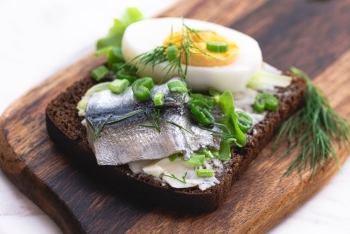
Kiluvõileib
Kiluvõileib is a traditional Estonian open-faced sandwich that consists of a slice of rye bread spread with tartar sauce and topped with a marinated sprat fillet. The sprats are caught from the Baltic Sea and are topped with fresh herbs. Sometimes a boiled egg is included as a topping, or the fish and egg are mixed together to form a spread. Kiluvõileib is common at social gatherings and festive events in Estonia.
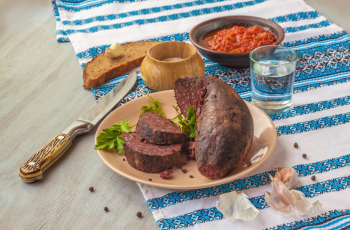
Verivorst
Verivorst is a blood sausage made from pork, pig's blood, onions, barley, allspice, and marjoram, which are stuffed into a pig's intestine and cooked until solidified. The name literally means "blood sausage." It is typically served with a dollop of sour cream.
Verivorst is common at Estonian street markets and is often served during Christmastime. During winter markets and holiday events, street vendors sell verivorst fresh off the grill, often alongside warm drinks including mulled wine. The sausage is considered the national dish of Estonia.
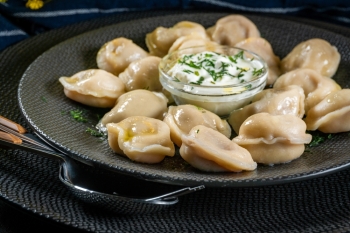
Pelmeenid (Dumplings)
Typically served with melted butter and sour cream, dumplings called pelmeenid come in a wide variety of fillings in Estonia. Beef and pork is a popular stuffing though the dumplings come in seafood variations and vegetarian versions such as mushrooms or potatoes as well. The dumplings are typically boiled but may also be fried.
While not traditionally Estonian, pelmeenid were introduced to Estonia during the Soviet period and are a childhood favorite for many Estonians born in the 1970s and 1980s. Street markets, particularly in Tallinn, offer a wide variety of pelmeenid.
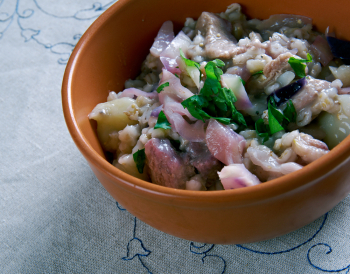
Mulgikapsad
Mulgikapsad is a dish featuring stewed sauerkraut with barley and chunks of pork. While traditionally considered a home-cooked dish, it has found its way into street food markets, especially during festivals. The pork is slow-cooked until tender, giving the dish a hearty, warming flavor that’s perfect for Estonia’s colder months. This dish originated in southern Estonia, particularly in the Mulgimaa region, and is still enjoyed during winter festivals and at Christmas markets.
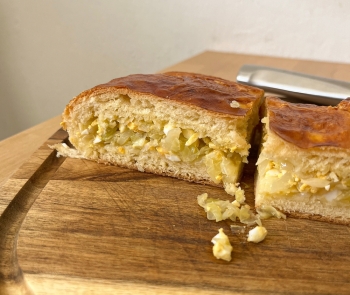
Kapsa Pirukas
Kapsa pirukas is Estonian cabbage pie, with the cabbage typically mixed with spices and sometimes small amounts of minced meat or onions. This pastry is a reflection of Estonia’s agrarian roots, where cabbage has long been a staple vegetable. Kapsa pirukas is a popular street food item, particularly during outdoor markets in the fall and winter months when cabbage is in season.
Sweet Treats
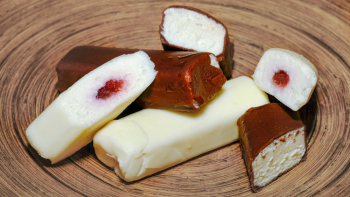
Kohuke
Kohuke is a sweet curd cheese bar which is dipped in chocolate. It has a cheesecake quality and texture, comes in many flavors including caramel and vanilla, and may be dotted with fruit or nuts. There are variations of kohuke that include fruit fillings such as strawberry or apricot. Kohuke is a favorite treat in Estonia, often enjoyed as a quick dessert or snack. This treat has its roots in traditional dairy products, and it’s commonly found at markets, convenience stores, and street stalls throughout the country.
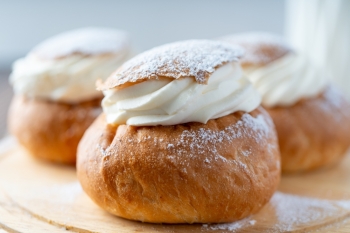
Vastlakukkel
Vastlakukkel consist of a sweet bun filled with cream. Variations may include the addition of jam or almond paste. This treat marks the beginning of Lent in Estonia and is widely sold at street stalls and bakeries during the weeks leading up to the holiday. It’s a popular snack for both locals and tourists, particularly during winter.
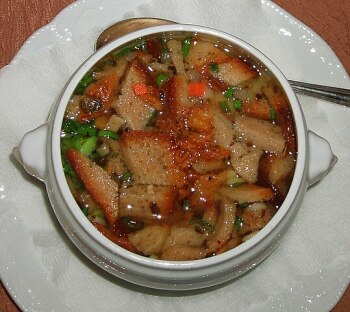
Leivasupp
Leivasupp is a traditional Estonian bread soup made from dark rye bread, sweetened with sugar, and flavored with cinnamon, dried fruits, or berries. It is often served with a dollop of sour cream or whipped cream. This dish is typically eaten as a dessert or snack and reflects Estonia’s deep-rooted tradition of using rye bread in a variety of ways. Leivasupp is particularly popular at traditional food markets and during winter festivals.

Doughnuts
Doughnuts are a popular street food in Estonia. They are known as värsked sõõrikud, which translates to "fresh doughnuts." These doughnuts are typically deep-fried, golden-brown, and often served warm. They are sometimes dusted with powdered sugar, cinnamon, or coated in a light sugary glaze. They are a favorite treat at markets, fairs, and street food stalls across the country.
Beverages on the Go
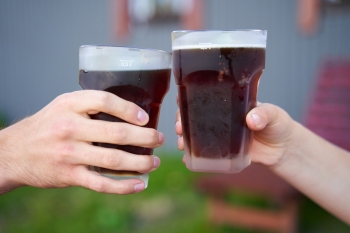
Kali
Kali is a low-alcohol, sour-sweet, and fizzy beverage made from fermented bread. It's also known as kvass or gira. Kali is a cross between beer and soda and is often described as a festive drink. Kali is Estonia's national drink and is commonly found at street food markets and festivals. The drink is a refreshing beverage, especially during the summer months, and is often sold by street vendors all along Tallinn's cobblestone streets. Kali dates back to medieval times and is still popular among Estonians today.
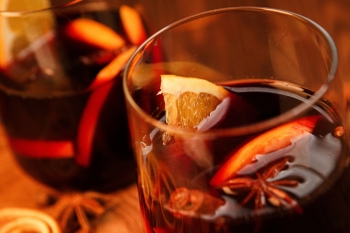
[ALC] Glögi (Mulled Wine)
Glögi is the Estonian name for mulled wine, which is made from red wine heated with spices such as cinnamon, cloves, and star anise, often sweetened with sugar and served hot. Variations might include adding citrus fruits or a shot of brandy or rum. Glögi is especially popular during the Christmas season and is widely available at Christmas markets and Estonian winter festivals.
The drink has a long history, dating back to the Romans, who drank hot spiced wine in the winter to warm themselves and as a remedy for colds and the flu. The drink's origins may have been with the Greek physician Hippocrates, who is said to have invented a spiced and sweetened wine called Hippocras. In medieval Europe, the drink became popular at banquets and was used to improve the taste of bitter or unpleasant wines, as well as to aid digestion. Spices such as cinnamon, cloves, and cardamom were introduced throughout the world by way of trade and exploration, and people also added other herbs for sweetness. By the 19th century, mulled wine had become a Christmas drink, with each vendor having their own special recipe. [/ALC]
Copyright © 2016-2025 World Trade Press. All rights reserved.
 Estonia
Estonia